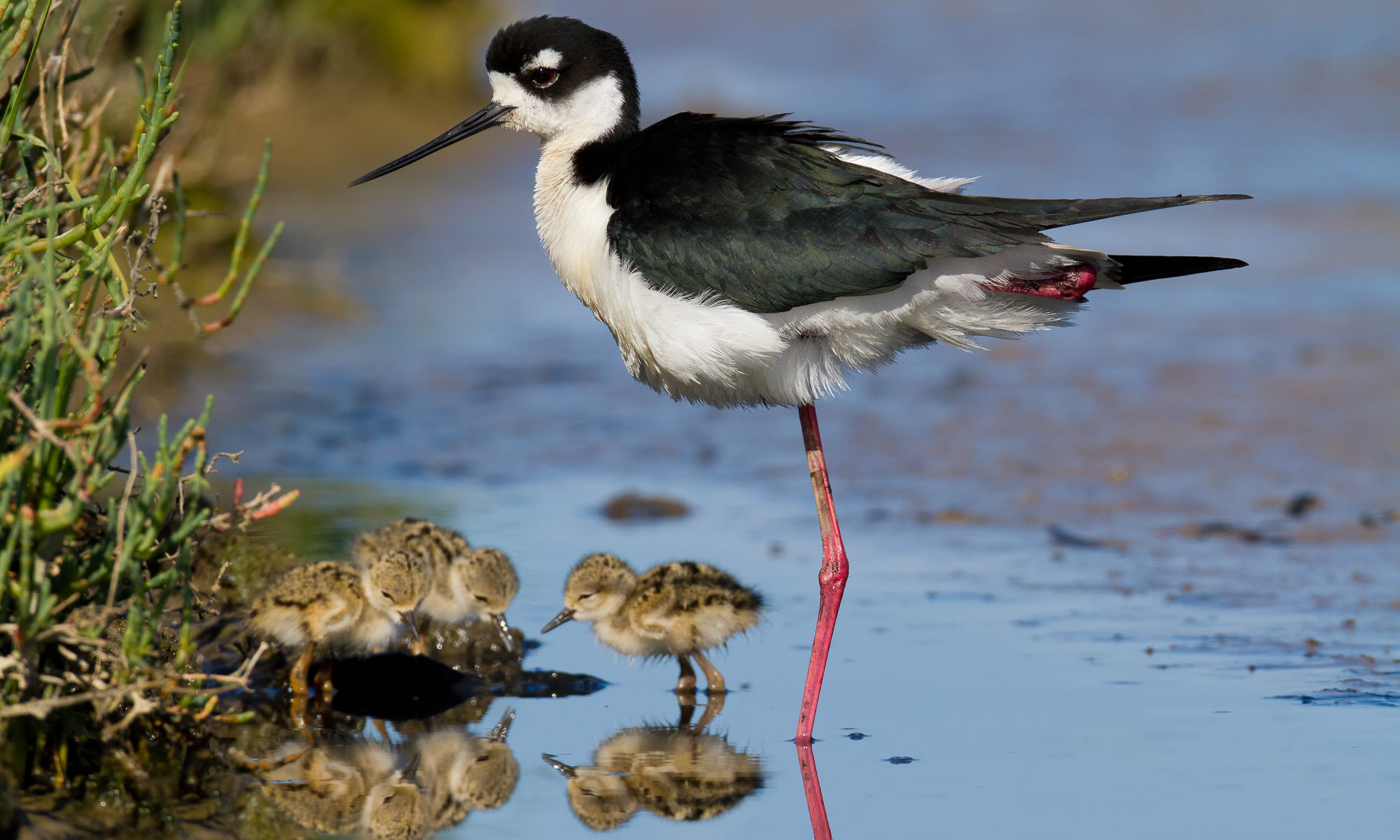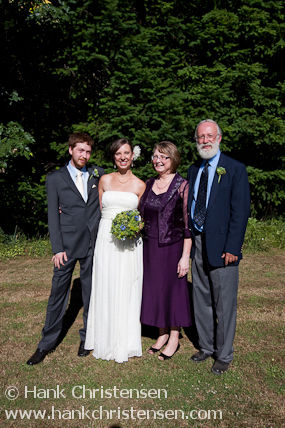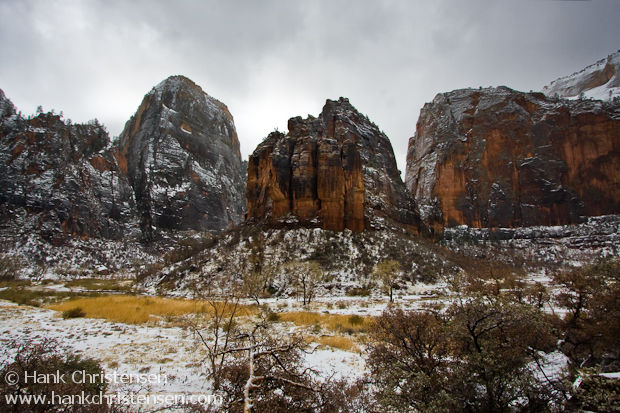I took this photo last year of a black-necked stilt and her three young chicks. I had set up in my usual position, with my lens close to the water surface in order to achieve a more intimate eye-level perspective. I was happy with the shoot and this shot in particular, showing all three chicks together with the mother standing protectively over them.
The only thing that bothered me each time to looked at it was the out-of-focus mud bank just peaking up into the frame. It had not been a concern when I was shooting the mother by herself, but once the chicks were introduced to the scene, the mud cut off parts of their reflections and became a distracting element.
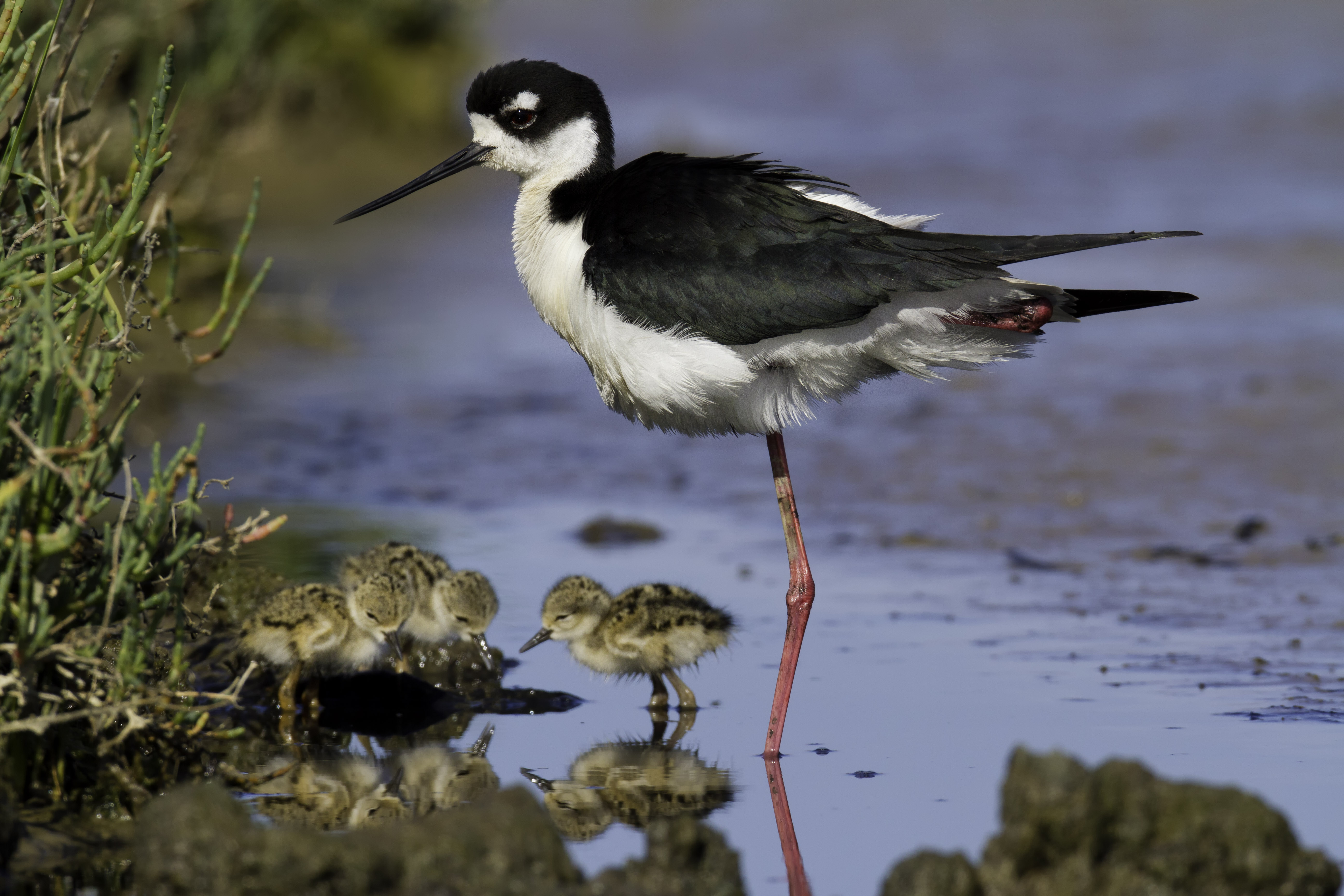
This week I took another look at the shot and realized I might be able to pull off digitally removing the mud feature, and finally fulfilling my original vision. The result is below.
I digitally removed the entire mud bank across the bottom of the photo, and restored portions of each chick’s reflections to rebuild what had been hidden behind the mud. While I was at it, I removed a distracting out-of-focus blade of grass from the left hand side of the photo.
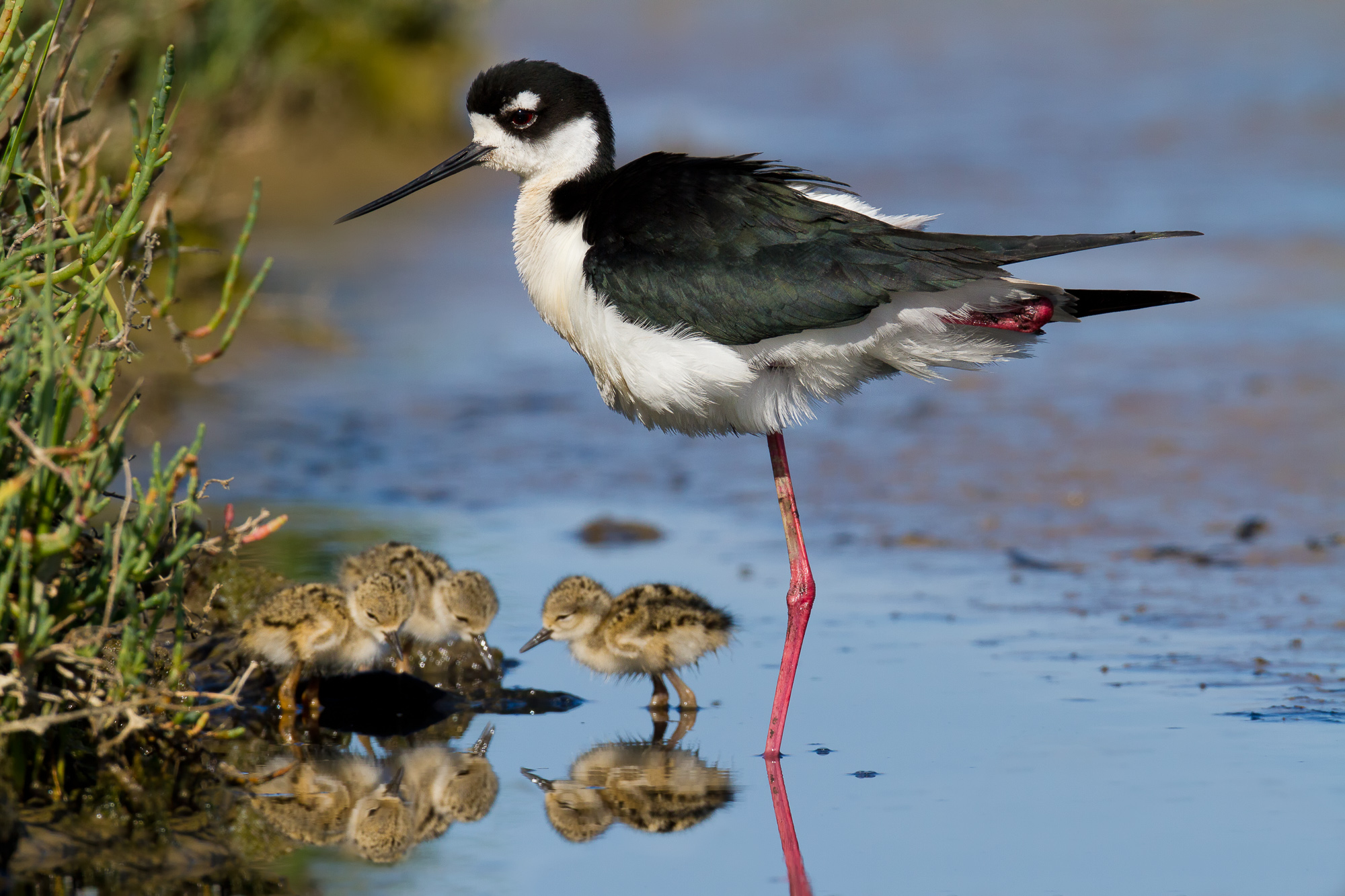
Was my change acceptable? Ethical perceptions of photography range wildly. Each photographer and photo critic sits somewhere on the spectrum from thinking that photography is merely a form of art so it is up to the artist’s vision, to thinking that any changes to what was captured by the camera is unethical and not acceptable.
In fact, ethics in photography cover topics other than just post-processing manipulation (which probably gets 80% of the attention). Even when a photograph represents accurately what a camera captures, it does not mean that the scene wasn’t artificially created by the photographer.
I think the judgment lies in how the photograph is presented to the audience. Is this presented as a work of art created in the mind of the photographer? Is it a natural history image, meant to accurately depict a natural scene or behavior? Do the digital edits in any way change the fundamental portrayal of that natural scene or behavior?
For example, in the digitally altered image presented in this article, if I had artificially inserted any of the chicks into the scene with the mother in order to create more emotional impact, that would go beyond what I consider an ethical representation of my work. It would be depicting a behavior in a species that never actually took place. However, the edits I have made fall inside what I consider ethical. I have not changed the position or behavior of any of the subjects of the photo. I have only removed an aesthetically distracting element in order to create a more pleasing photo.
What do you think? I’d love to hear your opinions on the matter.

